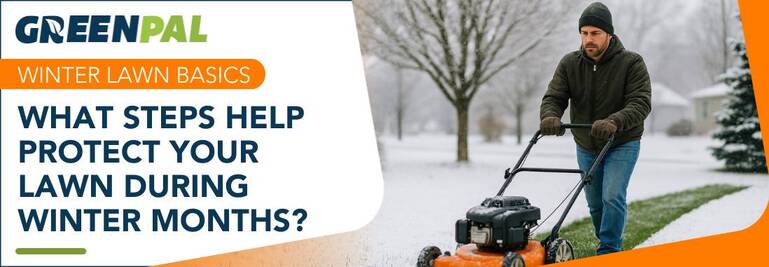What are some lawn tips for winter months?

So the season is over. You have worked your off all summer and fall (or paid a professional a pretty penny) to get your lawn in top notch shape, now it’s the end of the season… now what?
Well, hopefully you have already aeriated and overseeded. This is crucial to ensuring a great looking lawn next spring. This needs to be completed 3-4 weeks before temps start falling below an average of 50 degrees during the day, and 30 degrees at night time. IF you wait till too late in the fall or early winter, then you the window of opportunity has passed you buy, the seed will need 3-4 weeks of decently warm weather to germinate and grow before the coming winter.
Should this be the case don’t freak out, you can also do you it in the early early spring, typically late February or early March, when temps start creeping back up. But if you wait until too late in the spring , then the baby grass will get cooked by the impending summer heat. Timing is everything! Now... if you live in a warmer climate down in Florida, then this wont apply to you. But if you live in a climate with transitional weather further up north, then lawn care in Atlanta, or Nashville takes on a very different shape. So, getting yourself a snow blower would be highly recommended.

Now, assuming that you have seeded this fall, it will be good idea to apply a good quality time released granular winter fertilizer. A good winterizer fertilizer can be found at your local big box home supply stores, or you might want to buy local and support your local lawn and garden shop, or CO-OP it is my experience that better advice and guidance can be found there. You will need to wait until the baby grass has matured enough to where you can mow it a couple times, if you apply the granular fertilizer too soon you can burn up the baby grass and , not good! Make sure leaves and debris are raked or blown off the lawn , sunlight will need to get to the baby grass to germinate !
So here is a recap, first aeriate and overseed, wait for it to germinate and get healthy, now apply the food to feed it all winter. Then be planning your spring game plan!





 Share
Share











